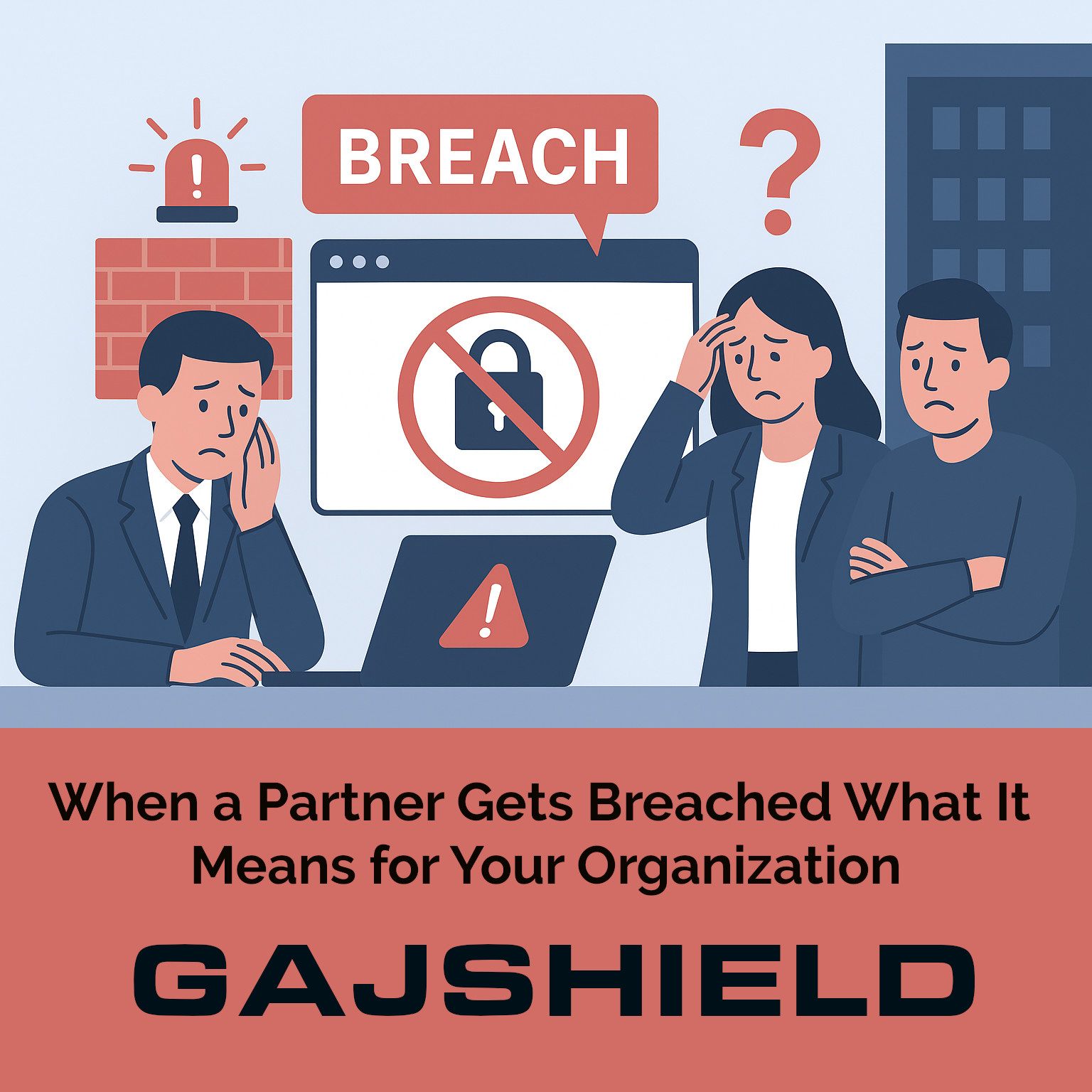When a Partner Gets Breached - What It Means for Your Organization

In today’s connected business world, no company operates in isolation. We rely on partners, vendors, and consultants to deliver technology, manage data, and improve operations. But when one of those partners suffers a cyberattack — like the recent Red Hat–GitLab breach, where sensitive configuration data and credentials were exposed — the impact can quickly ripple through the entire ecosystem.
Even if your organization wasn’t directly targeted, your data, credentials, or configurations stored with that partner could still be at risk.
Why such breaches matter
Breaches in partner systems can have serious implications:
-
Leaked credentials and keys — Attackers can use exposed passwords, API tokens, or certificates to infiltrate your environment.
-
Network and system exposure — Configuration files can reveal internal IPs, firewall rules, and architecture details.
-
Supply-chain compromise — Threat actors may inject malicious code or scripts into shared repositories.
-
Compliance and trust impact — Customers may lose confidence if third-party partners handling your data are compromised.
What organizations should do
Practical steps to strengthen resilience:
-
Rotate shared credentials regularly – Change API keys, SSH credentials, and passwords after any partner-related breach.
-
Review vendor access – Limit external users to only what’s absolutely necessary.
-
Scan code repositories for secrets – Use automated tools to detect credentials accidentally committed to source control.
-
Segment networks – Isolate development, production, and vendor access zones.
-
Monitor network activity – Keep an eye on abnormal traffic or file transfers that could signal data theft.
How our firewall helps defend against such risks
While no single solution can stop every type of breach, a next-generation firewall forms a strong first line of defense:
-
Network segmentation and isolation – Prevents attackers from moving across systems if one area is compromised.
-
DNS and web filtering – Blocks connections to known malicious or data-exfiltration domains.
-
Intrusion prevention and behavioral analytics – Detects suspicious data transfers and command-and-control traffic.
-
Centralized management – Provides full visibility into what’s entering and leaving your network.
-
Threat intelligence updates – Keeps protection current with the latest breach indicators and attacker infrastructure.
The added layer: Contextual Data Leak Prevention (DLP)
In addition to strong network security, contextual DLP plays a key role in identifying and mitigating data leaks before they become incidents.
It helps by:
-
Understanding data in context — DLP doesn’t just look at file types or keywords; it recognizes how and where sensitive information is being shared.
-
Detecting abnormal patterns — It can flag if a configuration file, key, or database backup is being sent outside approved channels.
-
Providing visibility and control — Administrators can investigate and act on data movement that looks unusual, without necessarily blocking legitimate business needs.
This approach helps organizations detect unintended or risky data exposure early — especially when dealing with multiple partners or shared repositories — without making claims of full prevention or zero trust.
In short
A partner’s breach doesn’t have to become your organization’s crisis.
By combining strong access controls, modern network segmentation, intelligent firewall protection, and contextual data visibility, companies can greatly reduce the impact of third-party or supply-chain incidents — and maintain control over what matters most: their data.
Get In Touch With Us
Subscribe to our Newsletter
2025 © GajShield Infotech (I) Pvt. Ltd. All rights reserved.
